Photo
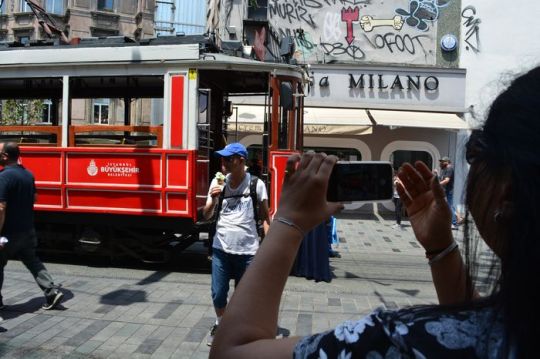
The Obstacles to Peace in Macedonia
Deep-Rooted Race Animosity
The tension in Macedonia is fueled by deep-rooted animosity between different ethnic groups. This hostility is often encouraged by politicians and priests in the name of Christianity. Such racial animosity presents a significant barrier to the Powers, who wish to improve the region’s condition. Even if the Powers were united and had the best intentions, these internal conflicts would still pose a substantial challenge. While Turkish misrule is a problem, handing over Macedonia to its Christian inhabitants to govern themselves could lead to even more severe bloodshed due to their internal rivalries and conflicting interests Bulgaria Tours.
Rival Claims and Land Hunger
The Christian factions in Macedonia are all driven by a desire for land. Each group claims historical and ethnic rights to various parts of the region, which fuels their conflicts. Unfortunately, this situation is often unintentionally exacerbated by well-meaning but uninformed Christians from other parts of the world. They may support one faction over another without understanding the full implications of their actions, thereby adding to the conflict rather than resolving it.
The Bulgarian Advantage
Among the various Balkan races, the Bulgarians stand out as the most robust, industrious, and capable of self-governance. Their achievements in Bulgaria since driving out the Turks are impressive and commendable. When Bulgaria’s borders were originally established, they should have extended further south and west to include regions that are predominantly Bulgarian but were left under Turkish control. This oversight has caused significant resentment and frustration among Bulgarians, especially as they have become more aware of their national potential.
Ambition for a Greater Bulgaria
A significant portion of the Bulgarian population aspires to create a “Greater Bulgaria,” which would incorporate these overlooked regions. While this ambition is understandable and could be seen as justifiable, it has led to considerable unrest and conflict. The push for a Greater Bulgaria has gone beyond reasonable aspirations and has become a major source of the ongoing strife in the region.
The Unintended Consequences of External Support
Support from Christians in other parts of the world, although well-intentioned, often worsens the situation in Macedonia. These external supporters may not fully grasp the complexities and deep-seated animosities among the local populations. Their actions can inadvertently support one faction over another, thereby intensifying the conflict rather than helping to resolve it.
The situation in Macedonia is a complex and tangled web of ethnic animosities, political ambitions, and external influences. The Powers face significant challenges in their efforts to bring stability to the region, hindered by the deep-seated rivalries among the local populations. The Bulgarians, while showing great potential for self-governance and development, are also driven by ambitions that contribute to the unrest. The well-meaning support from Christians abroad often complicates matters further. For lasting peace, a nuanced and well-informed approach is essential, one that considers the intricate dynamics at play and seeks to address the root causes of conflict.
0 notes
Photo
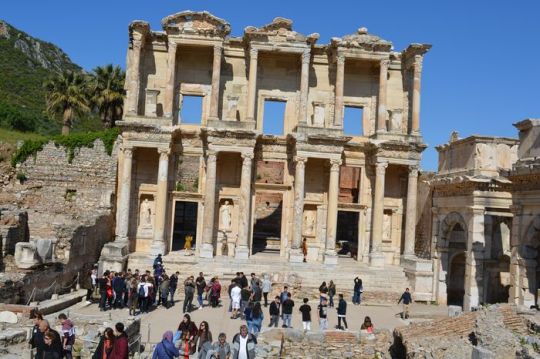
A Tale of Resistance and Agony
The Prelude to Tragedy
The events that unfolded in Perustitza are a tragic chapter in the annals of history, marked by atrocities and horrors akin to those witnessed elsewhere. While I refrain from delving into the gruesome details, the pillage, violence, and massacre inflicted upon this village echoed the brutal reality faced by many.
A Village Defiant
Perustitza, boasting 350 houses and a population of 2,000 to 2,500 inhabitants, stood as a bastion of resistance amidst the chaos. Unlike other villages that succumbed without a fight, its residents, though unprepared, fiercely defended their homes against the onslaught of the Bashi-Bazouks.
The Quest for Truth
Despite assertions by the Turks, there is scant evidence to support claims of a full-fledged insurrection in Perustitza. The tumultuous atmosphere fueled by rumors of impending war with Servia gripped both Christians and Muslims in a shared sense of fear and uncertainty. The Christians, in particular, lived in a state of justified panic, anticipating the horrors that would soon unfold City Tours Istanbul.
Disputing Allegations
The inhabitants of Perustitza vehemently deny any involvement in an insurgent committee or organized rebellion. The Turks, however, point to the villagers’ preemptive actions of burying valuables and concealing crops as evidence of their complicity in planning an uprising weeks before its eruption.
A Tragic Legacy
The plight of Perustitza serves as a somber reminder of the human toll exacted by conflict and oppression. Despite their efforts to resist, the villagers were engulfed by the same wave of violence and devastation that swept across the region, leaving behind a legacy of suffering and loss.
The story of Perustitza encapsulates the harrowing reality faced by countless communities during this tumultuous period. It underscores the importance of bearing witness to history’s darkest moments while striving to ensure that such atrocities are never repeated.
0 notes
Photo

A Tale of Resistance and Agony
The Prelude to Tragedy
The events that unfolded in Perustitza are a tragic chapter in the annals of history, marked by atrocities and horrors akin to those witnessed elsewhere. While I refrain from delving into the gruesome details, the pillage, violence, and massacre inflicted upon this village echoed the brutal reality faced by many.
A Village Defiant
Perustitza, boasting 350 houses and a population of 2,000 to 2,500 inhabitants, stood as a bastion of resistance amidst the chaos. Unlike other villages that succumbed without a fight, its residents, though unprepared, fiercely defended their homes against the onslaught of the Bashi-Bazouks.
The Quest for Truth
Despite assertions by the Turks, there is scant evidence to support claims of a full-fledged insurrection in Perustitza. The tumultuous atmosphere fueled by rumors of impending war with Servia gripped both Christians and Muslims in a shared sense of fear and uncertainty. The Christians, in particular, lived in a state of justified panic, anticipating the horrors that would soon unfold City Tours Istanbul.
Disputing Allegations
The inhabitants of Perustitza vehemently deny any involvement in an insurgent committee or organized rebellion. The Turks, however, point to the villagers’ preemptive actions of burying valuables and concealing crops as evidence of their complicity in planning an uprising weeks before its eruption.
A Tragic Legacy
The plight of Perustitza serves as a somber reminder of the human toll exacted by conflict and oppression. Despite their efforts to resist, the villagers were engulfed by the same wave of violence and devastation that swept across the region, leaving behind a legacy of suffering and loss.
The story of Perustitza encapsulates the harrowing reality faced by countless communities during this tumultuous period. It underscores the importance of bearing witness to history’s darkest moments while striving to ensure that such atrocities are never repeated.
0 notes
Photo

The Era of Wealth Accumulation
The accumulation of wealth in the Ottoman Empire reached its pinnacle during the eastern campaigns led by Yavuz Sultan Selim and Magnificent Suleyman.
Regulation of Treasury Affairs
Historically, before the reign of the Conqueror (Fatih), incoming booties and gifts were promptly deposited into the Treasury. The Treasury’s door would then be sealed, with the seal entrusted to the Grand Vizier or the Enderun’s doorkeeper. Access to the Treasury was strictly regulated, and entry by the Sultan or the Grand Vizier required oversight by a committee.
Investigation into Treasury Procedures
A thorough investigation into the handling of Treasury goods, particularly those recorded in registers related to the Royal Ward and Private treasuries, is necessary. Sultan Mehmet IV’s decree, overseen by Kara Mustafa Pasha of Merzifon, warrants scrutiny to understand the management of these assets Private Istanbul Tours.
Succession Protocols
The promotion of the Treasury Superintendent to the rank of Vizierate necessitated the transfer of Treasury responsibilities to the successor. Detailed explanations regarding the nature of the post were provided, ensuring a smooth transition in case of contingencies such as death, reflecting a tradition dating back to ancient times.
Historical Citations
The contributions of figures like Qandarli Halil Pasha and Karamanh Turk Rustem, who compiled registers and accounts, are documented in the History of the Ottoman Empire. These individuals played pivotal roles in organizing the Treasury and shaping its operations, leaving a lasting legacy inherited by subsequent generations.
Emphasis on Historical Figures
The significance of Qandarli Halil Pasha, Grand Vizier of Sultan Murat II, and Karamanh Rustem, the first Ottoman Minister of Finance, is underscored in the oldest and most reliable Ottoman history, Tevarih-i Ali Osman. Their contributions to Treasury management and financial administration remain noteworthy aspects of Ottoman history.
0 notes
Photo

The Grim Aftermath
As we ventured deeper into the village, we were confronted with the chilling evidence of the massacre’s aftermath.
A River of Death
Beneath us, the wheel-pit served as a macabre grave, its waters teeming with lifeless bodies. The stream’s banks, once strewn with corpses, bore witness to the gruesome fate of men, women, and children left to decay under the merciless sun.
Nature’s Grim Mercy
Yet, nature intervened—a torrential rainstorm descended, swelling the stream and carrying the bodies downstream. From Pestera to Tatar Bazardjik, forty miles away, the grim remnants of the massacre were scattered far and wide, concealed beneath the underbrush and shaded woods.
A Churchyard of Sorrow
Entering the churchyard, we were met with an overpowering stench—a poignant reminder of the tragedy that befell this once-sacred ground. Holding tobacco to our noses, we pressed on, determined to uncover the truth.
Uncovering the Horror
Within the confines of the churchyard, a grisly sight awaited us—an immense heap of human bodies, concealed beneath layers of stones and rubble. The entire area was transformed into a mass grave, the putrid odor emanating from the decaying remains Tour Packages Balkan.
Failed Attempts at Burial
Weeks after the massacre, attempts were made to bury the dead, but the stench proved unbearable. Men tasked with the grim duty could not bear to stay, hastily burying a few bodies while covering others with scant earth. In the churchyard, their efforts to conceal the horrific scene with stones and debris were only partially successful.
The scene before us bore witness to the unimaginable horrors endured by the villagers of Batak. Despite efforts to bury the dead and obscure the grim reality, the lingering stench and haunting remnants served as a sobering reminder of the brutality inflicted upon the innocent.
0 notes
Photo

Symbolizing Bulgarian Heritage
The Church “Sveti Apostoli Petur & Pavel” Witness to Historic Milestones
Situated at the foot of the Northern side of Tsaravets hill, the Church “Sveti Apostoli Petur & Pavel” holds immense significance in Bulgarian history. It has witnessed pivotal moments such as the appointment of Knaz Alexander Battenburg in 1879 and the Uniting of Bulgaria after the Russian-Turkish war, along with the proclamation of Independence in 1908.
Architectural Evolution and Restoration
Built by Tzar Kaloian to commemorate his signing of the Papal edict joining the Orthodox church with the Roman Catholic church in 1204, the church underwent later modifications, including the addition of a monastery by the wife of Tzar Asen the Second. Despite sustaining damage in the 1913 earthquake, the church was meticulously restored by architect B. Kuzupov, preserving its original intricate frescoes.
The Church “Sveti Georgi” A Testament to Time
Located on the right bank of the river, south of the church “Sveti Dimitur,” the early structure of the Church “Sveti Georgi” dates back to the mid-13th century under Tzar Ivan Alexander’s rule. The present-day church features frescoes from the early 17th century, offering a glimpse into its architectural evolution over centuries Private Turkey Tours.
A Hub of Trade and Diversity
Nestled in a wide turn of the Yantra river southeast of Tsaravets lies the area known as the Frenkhisar. While not fully excavated, this district unveils a bustling commercial hub where foreign traders and merchants once thrived. Artifacts showcasing a diverse cultural tapestry typical of commercial areas have been unearthed, alongside buildings housing local council and government offices.
A Sanctuary of Spiritual Reflection
Situated south of Tsaravets and Trapezitsa, Sveta Gora, or the Sacred Forest, derives its name from its association with Eastern European Christianity. Revered as a site for numerous monasteries, it provided a retreat for the religious and philosophical elite of society within close proximity to the bustling city center, symbolizing the harmonious coexistence of spirituality and urban life.
0 notes
Photo

Symbolizing Bulgarian Heritage
The Church “Sveti Apostoli Petur & Pavel” Witness to Historic Milestones
Situated at the foot of the Northern side of Tsaravets hill, the Church “Sveti Apostoli Petur & Pavel” holds immense significance in Bulgarian history. It has witnessed pivotal moments such as the appointment of Knaz Alexander Battenburg in 1879 and the Uniting of Bulgaria after the Russian-Turkish war, along with the proclamation of Independence in 1908.
Architectural Evolution and Restoration
Built by Tzar Kaloian to commemorate his signing of the Papal edict joining the Orthodox church with the Roman Catholic church in 1204, the church underwent later modifications, including the addition of a monastery by the wife of Tzar Asen the Second. Despite sustaining damage in the 1913 earthquake, the church was meticulously restored by architect B. Kuzupov, preserving its original intricate frescoes.
The Church “Sveti Georgi” A Testament to Time
Located on the right bank of the river, south of the church “Sveti Dimitur,” the early structure of the Church “Sveti Georgi” dates back to the mid-13th century under Tzar Ivan Alexander’s rule. The present-day church features frescoes from the early 17th century, offering a glimpse into its architectural evolution over centuries Private Turkey Tours.
A Hub of Trade and Diversity
Nestled in a wide turn of the Yantra river southeast of Tsaravets lies the area known as the Frenkhisar. While not fully excavated, this district unveils a bustling commercial hub where foreign traders and merchants once thrived. Artifacts showcasing a diverse cultural tapestry typical of commercial areas have been unearthed, alongside buildings housing local council and government offices.
A Sanctuary of Spiritual Reflection
Situated south of Tsaravets and Trapezitsa, Sveta Gora, or the Sacred Forest, derives its name from its association with Eastern European Christianity. Revered as a site for numerous monasteries, it provided a retreat for the religious and philosophical elite of society within close proximity to the bustling city center, symbolizing the harmonious coexistence of spirituality and urban life.
0 notes
Photo
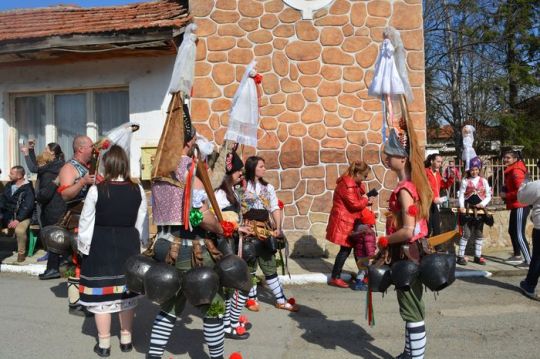
Symbolizing Bulgarian Heritage
The Church “Sveti Apostoli Petur & Pavel” Witness to Historic Milestones
Situated at the foot of the Northern side of Tsaravets hill, the Church “Sveti Apostoli Petur & Pavel” holds immense significance in Bulgarian history. It has witnessed pivotal moments such as the appointment of Knaz Alexander Battenburg in 1879 and the Uniting of Bulgaria after the Russian-Turkish war, along with the proclamation of Independence in 1908.
Architectural Evolution and Restoration
Built by Tzar Kaloian to commemorate his signing of the Papal edict joining the Orthodox church with the Roman Catholic church in 1204, the church underwent later modifications, including the addition of a monastery by the wife of Tzar Asen the Second. Despite sustaining damage in the 1913 earthquake, the church was meticulously restored by architect B. Kuzupov, preserving its original intricate frescoes.
The Church “Sveti Georgi” A Testament to Time
Located on the right bank of the river, south of the church “Sveti Dimitur,” the early structure of the Church “Sveti Georgi” dates back to the mid-13th century under Tzar Ivan Alexander’s rule. The present-day church features frescoes from the early 17th century, offering a glimpse into its architectural evolution over centuries Private Turkey Tours.
A Hub of Trade and Diversity
Nestled in a wide turn of the Yantra river southeast of Tsaravets lies the area known as the Frenkhisar. While not fully excavated, this district unveils a bustling commercial hub where foreign traders and merchants once thrived. Artifacts showcasing a diverse cultural tapestry typical of commercial areas have been unearthed, alongside buildings housing local council and government offices.
A Sanctuary of Spiritual Reflection
Situated south of Tsaravets and Trapezitsa, Sveta Gora, or the Sacred Forest, derives its name from its association with Eastern European Christianity. Revered as a site for numerous monasteries, it provided a retreat for the religious and philosophical elite of society within close proximity to the bustling city center, symbolizing the harmonious coexistence of spirituality and urban life.
0 notes
Photo
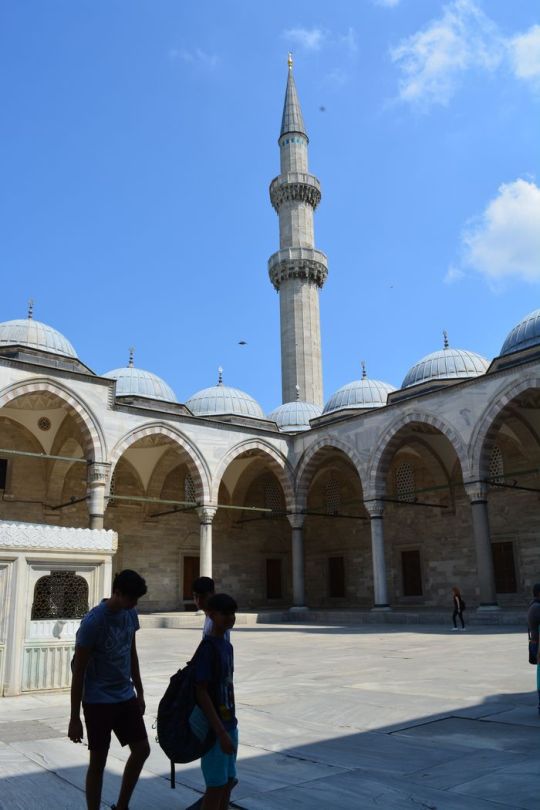
The Balkan Wars and World War I
Bulgaria’s Struggles and Shifting Alliances
Discontent with the Berlin Treaty and International Rivalries
The Bulgarian people strongly opposed the Berlin Treaty, leading to widespread bitterness. The Balkans became a stage for intense international rivalries, with Bulgaria caught in the midst. Bulgaria’s primary goals were unity and the realization of national aspirations, but political unrest persisted.
Balkan Wars and Disputes (1912-1913)
In 1912, Greece, Bulgaria, and Serbia united to oust the Turks from their lands. The Bulgarians played a significant role in this success. However, disputes erupted among the victors after defeating the Turks, leading to a second Balkan war in 1913. Facing attacks from Romania in the north and a return of the Turks, Bulgaria couldn’t handle four enemies simultaneously. A peace treaty in Bucharest that year resulted in the partitioning of much Bulgarian territory to Romania, Serbia, and Greece City Tours Istanbul.
World War I and Bulgaria’s Alignment (1915)
World War I broke out in 1914, and Bulgaria, courted by both sides due to its central Balkan location, joined the Central European Powers (Germany and Austro-Hungary) in 1915. Fear of Russian influence in the Balkan Straits was a decisive factor in Bulgaria’s shift away from the Allies. However, internal opposition within Bulgaria questioned the alignment with Germany.
Consequences of World War I (1918-1919)
The war concluded with the defeat of Germany and the dissolution of the Austro-Hungarian Empire. Bulgaria suffered territorial losses to Romania, Serbia, and Greece. The peace treaty of 1919 granted Greece the right to expel Bulgarians from Thrace and Macedonia. Feeling unjustly treated and surrounded by enemies, Bulgaria entered a period of instability under the reign of King Boris III after the war.
0 notes
Photo

The Balkan Wars and World War I
Bulgaria’s Struggles and Shifting Alliances
Discontent with the Berlin Treaty and International Rivalries
The Bulgarian people strongly opposed the Berlin Treaty, leading to widespread bitterness. The Balkans became a stage for intense international rivalries, with Bulgaria caught in the midst. Bulgaria’s primary goals were unity and the realization of national aspirations, but political unrest persisted.
Balkan Wars and Disputes (1912-1913)
In 1912, Greece, Bulgaria, and Serbia united to oust the Turks from their lands. The Bulgarians played a significant role in this success. However, disputes erupted among the victors after defeating the Turks, leading to a second Balkan war in 1913. Facing attacks from Romania in the north and a return of the Turks, Bulgaria couldn’t handle four enemies simultaneously. A peace treaty in Bucharest that year resulted in the partitioning of much Bulgarian territory to Romania, Serbia, and Greece City Tours Istanbul.
World War I and Bulgaria’s Alignment (1915)
World War I broke out in 1914, and Bulgaria, courted by both sides due to its central Balkan location, joined the Central European Powers (Germany and Austro-Hungary) in 1915. Fear of Russian influence in the Balkan Straits was a decisive factor in Bulgaria’s shift away from the Allies. However, internal opposition within Bulgaria questioned the alignment with Germany.
Consequences of World War I (1918-1919)
The war concluded with the defeat of Germany and the dissolution of the Austro-Hungarian Empire. Bulgaria suffered territorial losses to Romania, Serbia, and Greece. The peace treaty of 1919 granted Greece the right to expel Bulgarians from Thrace and Macedonia. Feeling unjustly treated and surrounded by enemies, Bulgaria entered a period of instability under the reign of King Boris III after the war.
0 notes
Photo
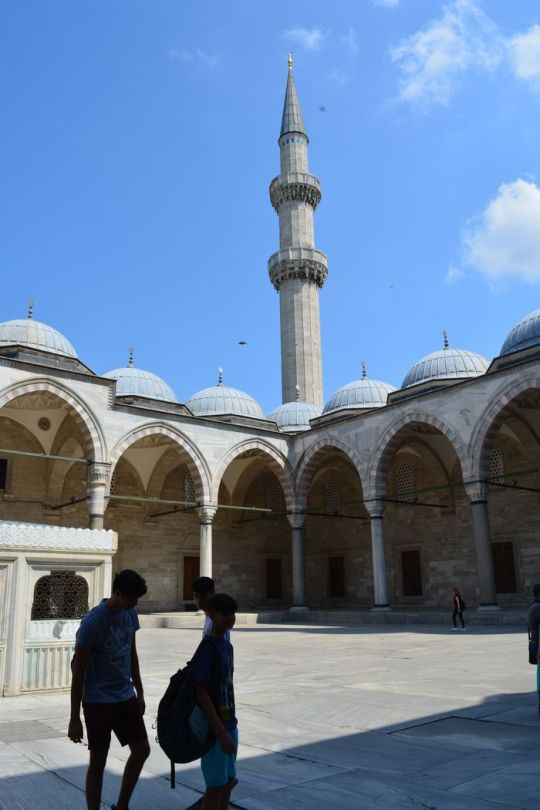
The Balkan Wars and World War I
Bulgaria’s Struggles and Shifting Alliances
Discontent with the Berlin Treaty and International Rivalries
The Bulgarian people strongly opposed the Berlin Treaty, leading to widespread bitterness. The Balkans became a stage for intense international rivalries, with Bulgaria caught in the midst. Bulgaria’s primary goals were unity and the realization of national aspirations, but political unrest persisted.
Balkan Wars and Disputes (1912-1913)
In 1912, Greece, Bulgaria, and Serbia united to oust the Turks from their lands. The Bulgarians played a significant role in this success. However, disputes erupted among the victors after defeating the Turks, leading to a second Balkan war in 1913. Facing attacks from Romania in the north and a return of the Turks, Bulgaria couldn’t handle four enemies simultaneously. A peace treaty in Bucharest that year resulted in the partitioning of much Bulgarian territory to Romania, Serbia, and Greece City Tours Istanbul.
World War I and Bulgaria’s Alignment (1915)
World War I broke out in 1914, and Bulgaria, courted by both sides due to its central Balkan location, joined the Central European Powers (Germany and Austro-Hungary) in 1915. Fear of Russian influence in the Balkan Straits was a decisive factor in Bulgaria’s shift away from the Allies. However, internal opposition within Bulgaria questioned the alignment with Germany.
Consequences of World War I (1918-1919)
The war concluded with the defeat of Germany and the dissolution of the Austro-Hungarian Empire. Bulgaria suffered territorial losses to Romania, Serbia, and Greece. The peace treaty of 1919 granted Greece the right to expel Bulgarians from Thrace and Macedonia. Feeling unjustly treated and surrounded by enemies, Bulgaria entered a period of instability under the reign of King Boris III after the war.
0 notes
Photo

Bulgaria's Transition to Democracy 1990-1992
Electoral Shifts and Social Unrest
In June 1990, the Bulgarian Socialist Party secured victory in the Grand National Assembly elections, surprising urban areas where expectations had favored other parties. The mass discontent in major cities, fueled by trade union pressures, led to spontaneous forms of protest, including rallies, “tent settlements,” strikes, and student sit-ins. Amid these expressions of political dissatisfaction, a notable development was the emergence of the Rights and Freedoms Movement (RFM), a political organization representing ethnic Turks. However, the party’s future existence faced contradictions with the newly adopted Constitution in July 1991. President Petar Mladenov’s resignation in the fall of 1990 marked a turning point, with Zhelyo Zhelev succeeding him. Prime Minister Andrei Loukanov, who led a second Socialist government, also resigned in November 1990.
The Challenge of Coalition Governance
To honor the agreement of a “peaceful transition” established at the round table, the Union of Democratic Forces (UDF) and the Bulgarian Socialist Party (BSP) formed a joint government. Led by neutral lawyer Dimitar Popov, the new cabinet aimed to address the crises that unfolded during Loukanov’s rule. Popov’s memorable response to concerns about the impact of price liberalization on February 1, 1991, became a historical phrase: “For God’s sake Guided Turkey Tours , brothers, do not buy!”
In October 1991, the UDF narrowly won parliamentary elections, and Filip Dimitrov, its leader, became the head of the first “blue” government, initially supported by the Turkish RFM. Despite high hopes, the consequences were dire, with agriculture in ruins, decreased production, societal divisions, including within the Orthodox Church, and strained international relations. Zhelyo Zhelev was elected president in January 1992, but both he and the cabinet struggled to consolidate support for the “Blue idea” and quell growing indignation. The first “blue” government eventually resigned in October 1992 when the Turkish ethnic party RFM withdrew its parliamentary support from the UDF.
0 notes
Photo

The Turbulent Years of Bulgarian Politics
Stamboliyski’s Rise and Fall
Stamboliyski’s Independent Agrarian Government
In the spring of 1920, after pre-term elections, the “Agrarians” secured a majority in the Parliament, marking a pivotal moment in Bulgarian politics. At this time, Alexander Stamboliyski assumed leadership, finally heading an independent agrarian government.
Stamboliyski’s Peasant Dictatorship
During his tenure, known as the “peasant dictatorship,” Stamboliyski openly opposed the young King Boris III. The Prime Minister’s ambitious reforms and radical political measures heightened tensions between capitalists and the working class, as well as between urban and rural populations. Stamboliyski’s self-confidence and authoritarian approach also drew criticism from intellectuals, leading existing pre-war political parties to seek unification against the agrarian government.
The “Fascist” Coup of 1923
On the night of June 9, 1923, a coup d’etat orchestrated by the Military Union and People’s Concord overthrew the government. Stamboliyski and other agrarian leaders were killed, placing Professor Alexander Tsankov at the helm of the new government, recognized by King Boris III. Despite these changes, political tension persisted, hindering efforts to restore constitutional order Sightseeing Turkey.
The Communist Uprising of 1923
Following the formation of the Communist International in 1919 and the Bolsheviks’ influence, a directive for a mass uprising arrived in Sofia in 1923. The Bulgarian Communist Party led the uprising in September of that year, adopting a “workers’-and-peasants’ rule” inspired by the Bolshevik model. However, government forces swiftly quelled the rebellion, forcing leaders like Georgi Dimitrov and their supporters to flee to Yugoslavia. The Communist Party was subsequently banned under the newly enacted “Law on the Protection of the State.”
In conclusion, the early 1920s in Bulgaria were marked by political upheaval, with Stamboliyski’s agrarian government facing opposition from various quarters. The era witnessed a coup, a communist uprising, and the suppression of political dissent, shaping the course of Bulgarian history for years to come.
0 notes
Photo
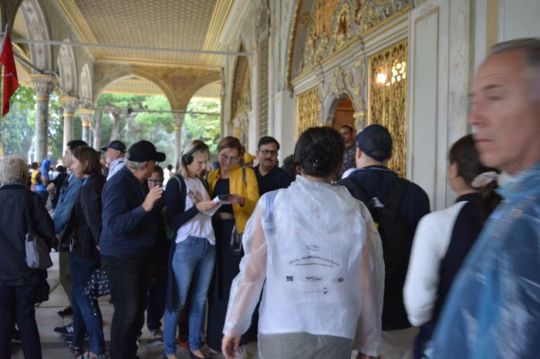
Unfathomable Agony in the Churchyard
Prolonged Agony A Four-Day Siege Unveils Unimaginable Suffering
For four interminable days, the besieged villagers endured a relentless onslaught within the sacred walls of the church. The haunting aftermath painted a portrait of unfathomable suffering, with lifeless bodies strewn across the churchyard, left unburied as silent witnesses to the brutality that had befallen the once-tranquil village.
Wounds Untended Agony of the Undressed and Unhealed
In the wake of the assault, the wounded lay in the throes of agony, their injuries left undressed or improperly treated. The absence of a medical professional in their midst condemned them to endure the pain of unhealed wounds. Besmeared with their own blood and the clotted remnants of their slaughtered companions, they bore the physical scars of the atrocities that had unfolded around them.
Specters of Desolation Filth, Weariness, and Haggard Faces
The besieged villagers, once vibrant and resilient, now resembled specters—filthy, wearied, and haggard. The desolation that had descended upon their community left an indelible mark on their faces, mirroring the physical toll exacted by the unremitting violence. The churchyard, once a sanctuary, had transformed into a grim theater of despair.
Relentless Assault Bashi-Bazouks’ Unyielding Barrage Continues
The small arms fire of the Bashi-Bazouks Bulgaria Holidays, strategically positioned on the low hills surrounding the church, continued unabated. The villagers, now desperate and defenseless, found themselves caught in a ceaseless barrage. Shells, like malevolent forces, tore through the churchyard, plowing through gravestones and crashing against the already battered walls—an unyielding testament to the unrelenting violence that held them captive.
Conclusion The Unending Nightmare of a Besieged Village
As the siege wore on, the churchyard became a haunting tableau of suffering and despair. The wounds—both physical and psychological—inflicted upon the besieged villagers bore witness to the extremities of human cruelty. In the heart of the besieged village, the unending nightmare persisted, leaving an indelible scar on the collective memory of those who survived the relentless onslaught.
0 notes
Photo

From Siege to Surrender
Perustitza’s Saturday Morning Ordeal
As the sun rose on Saturday morning, a pivotal moment unfolded in the besieged village of Perustitza. The Armenian girl’s account offers a window into the shifting dynamics as the gates of the churchyard, once a sanctuary, were slightly ajar. The subsequent events reveal a mix of coercion, promises, and the complex psychology of those caught in the throes of conflict.
A Glimpse of Hope The Churchyard Gates Slightly Ajar
Saturday morning marked a potential turning point in the tragedy of Perustitza. The Armenian girl, peering out from the church, witnessed an unexpected sight—the gate of the churchyard slightly open, guarded by a soldier. In a daring move, she ran out, fear etched on her face, and pleaded with the soldier not to harm her. The soldier, in a surprising twist, assured her safety and urged her to beckon the others to join.
The significance of this moment cannot be overstated. The gates, which had confined the villagers within the churchyard’s walls, now offered a glimmer of opportunity. The soldier’s reassurance and the slight opening of the gate hinted at a potential reprieve for the beleaguered inhabitants, setting the stage for a momentous decision that would shape the course of events.
The Illusion of Mercy Surrendering to Aziz Pacha
As the two hundred and fifty to three hundred villagers, predominantly women and children, cautiously stepped out of the churchyard, they found themselves face to face with Aziz Pacha. A peculiar twist of fate unfolded as Aziz Pacha Balkan Tours, seemingly awaiting their surrender with open arms, praised the Armenian girl for taking the lead in persuading others to follow suit. However, his words carried an unsettling undertone, shifting blame onto the villagers for their perceived stubbornness in not surrendering sooner.
Aziz Pacha’s narrative painted a distorted picture of mercy and magnanimity. He asserted that the siege and bombardment would have ceased long ago had the villagers chosen to surrender willingly. In a disconcerting juxtaposition, he expressed astonishment at the persistence of the women and children who, in his eyes, needlessly subjected themselves to bombardment when they had the option to embrace his supposed benevolence.
The complex psychology of coercion and manipulation comes to the fore in this moment of surrender. The villagers, worn down by the relentless siege and the horrors they endured, faced an agonizing decision. Aziz Pacha, whether through genuine intent or strategic manipulation, had created an environment where surrender appeared as the only viable option.
The surrender of Perustitza’s inhabitants, orchestrated under the shadow of bombardment, raises profound questions about the dynamics of power, coercion, and the blurred lines between true mercy and calculated manipulation in the crucible of conflict. This pivotal Saturday morning, while marking the end of the immediate siege, leaves an indelible imprint on the collective memory of Perustitza, a village forever altered by the complex interplay of forces beyond its control.
0 notes
Photo
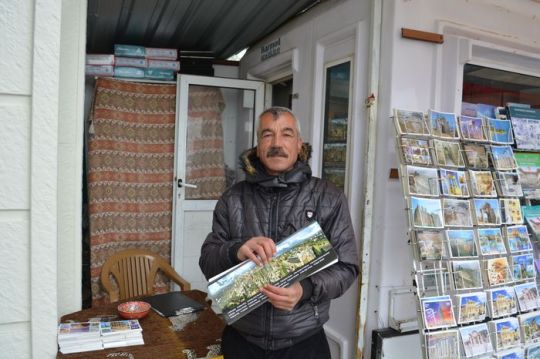
Philippopolis and Tatar Bazardjik
Mr. Baring, I am informed, will report that in the districts about Philippopolis and Tatar Bazardjik alone there have been about fifty villages burnt, without counting those that have been only pillaged, and that nearly 15,000 people have been slaughtered. This is the lowest estimate, and it does not include the districts about Sofia and those north of the Balkan. The French and Russian Consuls and the railway officials give much higher figures, and would put the number of villages burned at over a hundred, and the killed at 25,000 to 40,000.
There are people who put the number of killed at 100,000. For my own part, once the enormous number of 15,000 killed in four days is admitted, I do not care to inquire further. The French Consul and the German railway officials may be right or they may he wrong. Fifteen thousand is enough ; for no mere increase in a statement of round numbers can add to the horror of the thing. It is only in the recital of City Tours Istanbul the details accompanying the butchery that the mind can grasp and understand the fearful atrocity of the business.
Greek Consul
The Greek Consul, who is not friendly to the Bulgarians, tells me of 12,000 wretched women and children marched into Tatar Bazardjik, nearly all of whom suffered the vilest outrages. He tells me of Bulgarian fathers who killed their wives and children in order to put them out of reach of the ferocity of the Bashi- Bazouks.
The German officials tell me of the bodies of men cut up and flung to the dogs in villages near their own railway stations; of little children of both sexes maltreated and brutalised until they died; of a priest, whose wife and children were outraged and slaughtered before his eyes, and who was then put to death, after the most fearful torture, the details of which are too abominable to be re-told. I have the story of a young and beautiful girl, who having found means to obtain the rudiments of an education, opened a school in her native village, and tried to do something for the education of the poor people about her, who is now lying in prison here sick and brokenhearted, whose story is too sad for recital.
0 notes
Photo
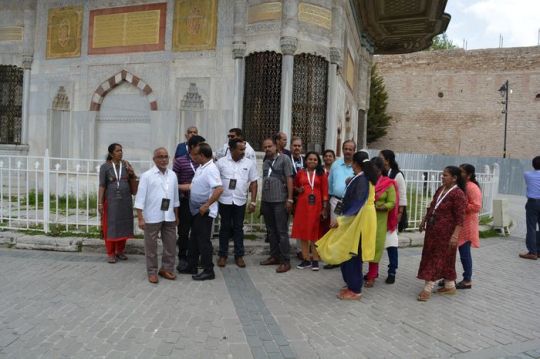
Obtained from Turkish Government
He could not have obtained it from the Turkish Government, for the reason that even the Turkish authorities here do not claim more than 500 Turks killed altogether, of whom the greater part, they admit, were killed in battle, with arms in their hands ; and further, because while they claim some thirty women killed , they have not so far given Mr. Schuyler proof that a single woman or child was killed or outraged. Kiani Pacha told him that the Mudir of the village of Avrat-alan had been killed with his wife and daughter.
Mr. Schuyler found, upon inquiry, that the wife of the Mudir was absent in a different part of the country when the fight occurred, and that the report of her death was therefore untrue; while as to the daughter, he learned that the Mudir never had a daughter. But supposing that proof may yet be forthcoming of thirty Turkish women killed—as they may have been in the street fighting—it is very evident that at the time Lord Derby spoke, he had no proof of such a fact City Tours Istanbul, nor the slightest reason for the sweeping assertion that the Bulgarians had shown themselves equal in barbarity to the Turks.
Mr. Disraeli
The only inference is that he made a perfectly reckless statement, in support of which he had not the slightest particle of evidence ; and this at the moment when Mr. Disraeli was accusing well-informed newspapers, that had taken pains to obtain correct information, of giving credence to exaggerated and unfounded rumours
It is said that the Bulgarians had no business to rise, that they made an insurrection which was put down with a strong hand, and that they must take the consequences. The best answer to this is the manifesto published by the new Government, after the deposition of the late Sultan, in which it was shown that the misrule and oppression of the late Government had passed the limit of endurance.
The extortions and mismanagement of the Government had produced such a degree of misery among the peasantry, that without a change their existence was no longer possible. This, indeed, was the reason for the revolution at Constantinople. And yet Midhat Pacha and his associates are still hanging and imprisoning these poor people for doing what they have shown the Bulgarians were perfectly justified in doing, and for what they themselves have done—revolting against the Sultan.
0 notes